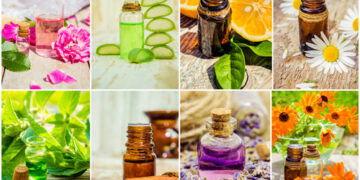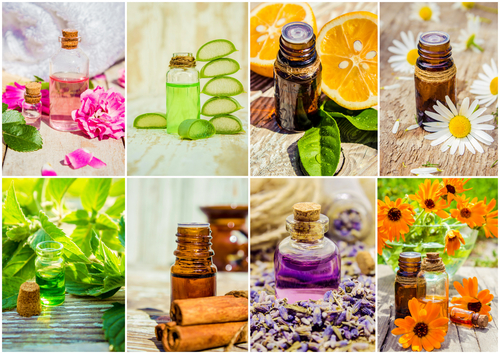A Garden-Crafted Glow
There’s a certain kind of beauty that doesn’t come from serums or highlighters—it rises softly from within, nurtured by rest, nourishment, and the quiet magic of plants. I’ve always believed that nature gives us everything we need for radiant skin. When I began making my own skincare, it wasn’t the complex actives that captured my heart, but the wild, healing herbs—calendula, chamomile, aloe vera, and their plant kin—that have soothed, softened, and restored skin for centuries.
These botanicals are more than ingredients—they’re allies. They’ve traveled through generations in teas, tinctures, and healing balms, each one offering a specific kind of care. Their textures are soft and comforting, their scents grounding and familiar. They whisper to the skin in a language it understands.
Let’s wander through a garden of skin-loving herbs, and explore how each one can bring out your skin’s natural, healthy glow.
Ad Banner #1
Placeholder for promotional content or advertisement.
Calendula: Sunshine in a Petal
Bright and golden, calendula (Calendula officinalis) is often the first herb I reach for when skin feels fragile or inflamed. Its petals, when steeped into oil, create a deep orange infusion that smells faintly of honey and grass. I use this oil in nearly every balm I make—it helps calm redness, accelerate healing, and reduce irritation.
Calendula is rich in flavonoids and carotenoids, which support the skin’s natural repair process. Whether your skin is dealing with minor cuts, sensitivity, or just feels a little worn, calendula offers a soothing embrace.
Try adding calendula-infused oil to a simple beeswax salve or blending it with shea butter for a healing body balm. It’s gentle enough for even the most delicate complexions, including baby skin.
Chamomile: The Comfort Herb
Chamomile (Matricaria chamomilla or Chamaemelum nobile) is like a soft blanket for the skin. Best known as a calming tea, chamomile also soothes the skin with its natural anti-inflammatory compounds, like bisabolol and chamazulene. Its scent is warm and herbaceous, with a hint of apple—grounding and comforting, like a quiet moment before bed.
I often use chamomile hydrosol in my facial mists. It calms my reactive cheeks and tones the skin gently after cleansing. For a deeply soothing ritual, steep dried chamomile in warm oil over low heat, then use the strained infusion as a base for a night oil. Skin that’s prone to stress—eczema, rosacea, or just the wear and tear of daily life—drinks it up like dew.
Aloe Vera: The Desert’s Dewdrop
If calendula is sunshine and chamomile is calm, aloe vera is cool water in the desert. This clear, gel-like substance, found inside the fleshy leaves of the aloe plant, has long been prized for its ability to hydrate, heal, and soothe. Its texture is cooling and slippery, absorbing quickly while leaving behind a soft, refreshed finish.
Aloe vera is naturally rich in polysaccharides, amino acids, and antioxidants that support collagen production and reduce inflammation. It’s my favorite post-sun remedy—I blend it with lavender and peppermint hydrosols for an after-sun spritz that cools and comforts the skin instantly.
It’s also lovely in masks: mix fresh aloe with a touch of raw honey and white kaolin clay for a skin-softening, glow-boosting treat.
Beyond the Basics: Other Radiant Botanicals
The plant world is abundant, and so many herbs offer unique gifts to the skin:
-
Rose: Hydrating and toning, especially in the form of rosewater or oil. It carries a soft floral scent that feels like self-love bottled.
-
Lavender: Calming to both skin and spirit, often used in oils, mists, and soothing balms.
-
Green Tea: Rich in catechins, it’s an antioxidant powerhouse—perfect in serums or masks for a radiant, balanced complexion.
-
Witch Hazel: Naturally astringent and toning, ideal for oily or acne-prone skin (just choose alcohol-free versions for gentleness).
Each herb brings its own kind of glow—whether it’s calming inflammation, deeply moisturizing, or simply restoring balance.
Ad Banner #2
Placeholder for second promotional content or advertisement.
A Few Gentle Reminders
Even with plant-based skincare, it’s important to listen to your skin. Natural doesn’t always mean irritation-free. Patch test new ingredients—especially essential oils or concentrated extracts—before applying them broadly.
Choose high-quality, organic herbs and oils whenever possible. And if you’re harvesting or making your own infusions, take care to store them properly—botanicals are living things, and their potency fades with time and light.
Returning to the Garden
Plant-based skincare is a return to the garden—to the quiet wisdom of roots, petals, and leaves. When you bring these ingredients into your skincare, you’re not just feeding your skin, you’re restoring a connection—to the land, to tradition, and to yourself.
Every time I reach for my little jar of calendula balm or spritz rose hydrosol across my face, I feel it. That grounded, glowing calm that only nature can give.
So let your skincare bloom. Steep your oils. Blend your balms. Touch your skin with care and plants will do the rest.



























